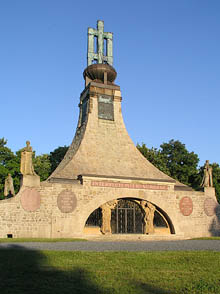
The Mound of Peace at the Slavkov Battlefield Celebrates 100 Years
 |
The mound, intended as a commemorative "place of light" and a memento of wars, is a dominant feature of the protected heritage zone of the Austerlitz battlefield. A museum is located at the mound, where visitors can find a multimedia exhibition about the battle.
Two years ago, another exhibition was opened in the new museum pavilion, dedicated among other things to the responses to the Austerlitz battle in contemporary sources and later artistic works. "The exhibition traces how the battle continues to live on in this region, how it influenced film, visual arts, literature, or applied arts," said curator Josef Večeřa to ČTK.
The centenary monument has undergone repairs in recent years. However, issues with moisture rising continue to arise. The Museum of Brno, which manages the mound, is therefore considering further intervention. "We would like to have everything completed by 2015," stated museum director Antonín Reček. The year 2015 will mark the 210th anniversary of the famous battle.
The Mound of Peace, with its chapel and ossuary, is probably the first peace memorial in Europe. It was built between 1910 and 1912 in a Secessionist style inspired by ancient Slavic mounds. It was not officially opened until 1923. The construction was initiated by the patriotic Brno priest Alois Slovák. The design was created by architect Josef Fanta.
The English translation is powered by AI tool. Switch to Czech to view the original text source.
0 comments
add comment










